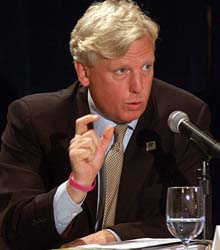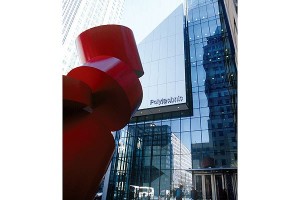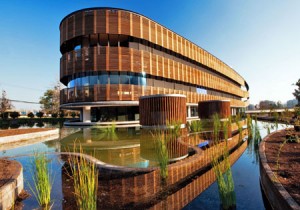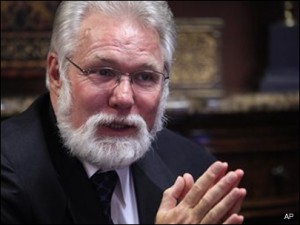 In his first formal appearance as the Polytechnic Institute of New York University Future of Cities Global Fellow, former Toronto Mayor David
In his first formal appearance as the Polytechnic Institute of New York University Future of Cities Global Fellow, former Toronto Mayor David Miller challenged the incoming students to tackle what he called the world’s foremost challenge: innovating to solve urban problems. His recent convocation keynote speech this to approximately 560 new first-year undergraduates publicly marked the relationship between NYU-Poly and Miller, a global leader in urban environmental sustainability, economic development and social integration. As Toronto mayor from 2003 to 2010, Miller became recognized for innovations that furthered the city’s environmental sustainability, economic development and social integration. Miller is currently counsel, international business and sustainability, to the Toronto law firm Aird & Berlis LLP and president of Urban Green Jobs, Inc.
Miller challenged the incoming students to tackle what he called the world’s foremost challenge: innovating to solve urban problems. His recent convocation keynote speech this to approximately 560 new first-year undergraduates publicly marked the relationship between NYU-Poly and Miller, a global leader in urban environmental sustainability, economic development and social integration. As Toronto mayor from 2003 to 2010, Miller became recognized for innovations that furthered the city’s environmental sustainability, economic development and social integration. Miller is currently counsel, international business and sustainability, to the Toronto law firm Aird & Berlis LLP and president of Urban Green Jobs, Inc.
Noting that recently the scales tipped so that most of the people of the world now live in cities, Miller told the students: “This fundamental change has an important implication for your studies. No longer will it be sufficient to simply study chemical or computer engineering, or any other technical field and become an expert – it will also be essential to understand the public policy context and challenges within which your research is being conducted.” Using real-world examples from his experience, Miller told the students that engineers and technology will play an increasingly important role in solving these urban problems. He also pointed to ways to have fun while creating solutions. He pointed to the example of the NYC BigApps Challenge, which employs open source code and open government information to create apps to make city life better for residents and visitors.
Jon Stewart Surprises NYU Students
“We have faith in your capacity to learn and make the world a better place,” NYU-Poly President Jerry Hultin told students in his welcoming remarks. “Here at NYU-Poly, you will find a 21st century toolbox of education and research…With our faculty I challenge you to combine the traditional engineering disciplines in new ways, and to set a personal goal to make a difference.” Miller’s role as Future of Cities Global Fellow will include other lectures, as well as teaching and assisting NYU-Poly and NYU in developing programs that connect technology and society to solve pressing urban challenges. Among other projects, he plans to co-instruct a studio class in which students work to increase sustainability in local parks. Urban technology is one of NYU-Poly’s highest academic priorities, befitting its mission as a comprehensive school of engineering located in one of the world’s great urban centers.














